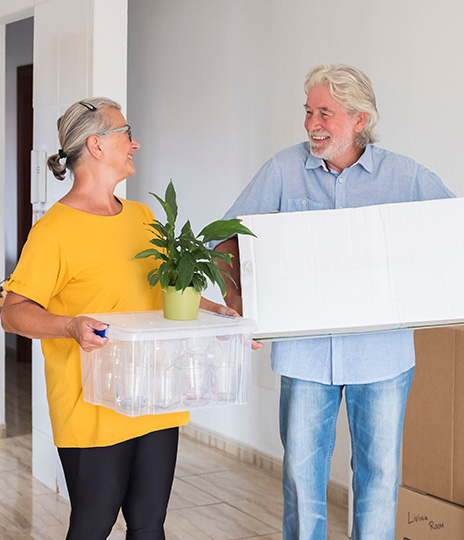There are many things to think about when deciding how to stay in your own home as you get older. It's important to plan ahead to make sure everything goes smoothly.
Our Aging Well Resource Coordinator can help you with your plans and supports you may need to help.

Home Modifications
Home modifications can help you stay in your own home. There are different types of modifications that can help ensure safety and allow for more independence in your daily living activities. Modifications can range from simply updating your lighting to removing rugs to installing ramps or grab bars to investing in a stairlift.
The National Association of Home Builders has a directory of professionals with home building designations. The Certified Aging in Place Specialist (CAPS) designation lists home remodelers with specialized training in Aging-in-Place design. You can also search by state and city. Find your Local Home Builder Association.
For assistance finding certified specialists in your area, you can also reach out to our Aging Well Resource Coordinator.
Home Modifications for Aging in Place Safely
The desire to stay in your home as you age is understandable, but it may not continue to meet your needs as your health and mobility change. With a few modifications, you can make your home safer, more accessible, and better suited for aging in place. Learn how to assess your home and reduce risks to support your independence.
Hiring a Contractor
There are thousands of legitimate, ethical contractors to choose from around the country. Unfortunately, there are also scam artists looking to cheat you out of your money who pose as legitimate contractors. You can never be too careful when hiring a contractor. The National Association of Home Builders has tips to help ensure you don’t get scammed.
Here are a few highlights:
- Interview several businesses before making a final decision
- Consider finding a Certified Aging-in-Place Specialist
- Meet them in person — personality fit is important
- Ask for references for similar work completed
- Review ratings on well-established websites
- Make sure they are licensed for the work you are asking them to do
- Ask for proof of insurance
- In preparing for the job obtain the following: total cost, begin and end date, payment schedule, process for obtaining building permits, process for any changes that may be needed, and warranties for products
Home Safety
Ensuring your home is safe should be a top priority. To get started on an assessment of your home’s safety, University at Buffalo Department of Rehabilitation Science put together a Home Safety Self-Assessment Tool to help you assess each room in your home as well as entrances. The tool also provides solutions to identified issues.
Clutter isn’t just inconvenient — it can also be a safety hazard, increasing the risk of trips, falls, and blocked pathways. A key part of keeping your home safe is getting rid of things you don't need. If you've lived in your home for a long time, you've probably accumulated a lot of items you no longer use. To help you decide what to keep and what to let go of, check out our downsizing guide.
For additional assistance in assessing your home for safety, our Aging Well Resource Coordinator can put you in touch with local resources.
Fall Prevention
Falling is the leading cause of non-fatal injuries for older Americans. Not only can it be a safety hazard, it can also threaten your independence and livelihood. The Centers for Disease Control and Prevention’s STEADI Initiative had lots of materials to help with prevention. In addition, MyHealthfinder has quick tips to help lower your risk of falling.
The Aging Well program can help you address your risk for falls and teach you how to protect yourself from injury and support your independence.

